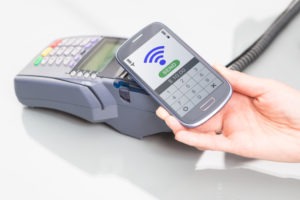Each month, we’ll help you navigate the emerging trends and forecasts for card-not-present (CNP) merchants with (what we think) are the best pieces of advice from Verifi and across the web. We promise to keep this newsletter short and sweet so let’s get started with this month’s …
What impact do chargebacks have on the overall payments ecosystem and how can both merchants and Issuers effectively prevent and fight chargebacks without negatively impacting customer experience?

EVERYONE WINS WHEN MERCHANTS & ISSUERS COLLABORATE

Chargebacks are a $40 billion problem for merchants and a big problem for Issuers, who rely on excellent customer service to retain current customers and attract new ones. In an already difficult business climate, chargebacks can significantly – and detrimentally – impact an Issuer’s bottom line. By collaborating directly with merchants, Issuers have the opportunity to conserve valuable resources, reduce operational cost and maintain exceptional customer service that keeps profits growing.
OMNI-CHANNEL ISN’T JUST FOR MERCHANTS

MERCHANTS: DO YOUR HOMEWORK—GET OMNI-READY

Mobile commerce is a big focus for 2015, prompting merchants to create a solid channel strategy; however, fraud does not discriminate between channels or technologies. Whether through in-house resources or by employing the help of a third-party vendor, merchants need to focus on protecting payments from end to end and across every channel:
- Get schooled by Goldilocks and score ‘just right’ fraud prevention
- Maintain a secure, fraud-free mobile experience
- Know which tools to use for mobile fraud prevention
TOTAL CHARGEBACK MANAGEMENT

Chargebacks affect everyone in the payment ecosystem. Merchants get slammed with fines and fees, Issuers carry the burden of increased operational costs and drained resources and – in the long run – consumers pay more to make up for the losses from fraud. Total chargeback management helps both merchants and issuers resolve disputes on the front-end, avoiding costly chargebacks. Since some chargebacks are unavoidable, chargeback representment gives merchants the opportunity to recover revenue that would have otherwise been lost.
Get real about the serious chargeback problem—it’s costing you $40 billion:
- Prevent: How much are chargebacks REALLY costing you?
- Recover: Millions are at stake
- How to Use Visa Codes to Avoid Chargebacks
- How to protect payments from costly chargebacks with a Total Chargeback Management strategy
PARTING WORDS
Chargebacks are the universal enemy to the payments world. They cost merchants and Issuers time and money and negatively impact the consumer experience. As CP and CNP commerce continues to merge and emerging technologies open up new vulnerabilities, both merchants and Issuers need a practical, cost-effective way to fight this nuisance – one that involves working jointly to combat the problem.
Omni-channel has extensive benefits for merchants and Issuers who have a solid strategy in place. Merchants also need to focus on fraud prevention that spans the entire transaction lifecycle, which means aggregating customer data from all channels to identify both good and bad trends. Issuers need to adapt to omni-channel in the same way their customers are adapting. The end game remains the same: to get people to respond; however, the way in which Issuers accomplish this will be based on deep reporting and analysis of customer and prospect segments and the adoption of an omni-channel strategy that is aligned with those findings.
Looking for a fraud and risk mitigation strategy that protects payments without inhibiting sales? Verifi’s Global Payment Gateway, Intelligence® Suite, Cardholder Dispute Resolution Network™ (CDRN) and Chargeback Representment (CBR) seamlessly combine (without IT hassles) to form a processor agnostic “Super Gateway” that protects your payments from start to finish while ensuring good sales flow through. The “Super Gateway” provides omni-channel, end-to-end payments protection with customizable fraud tools and Total Chargeback Management that can lower your chargeback losses by up to 65%*.
What are your thoughts? Ping us on twitter (@verifi) with #paymentstips and let us know what you think.